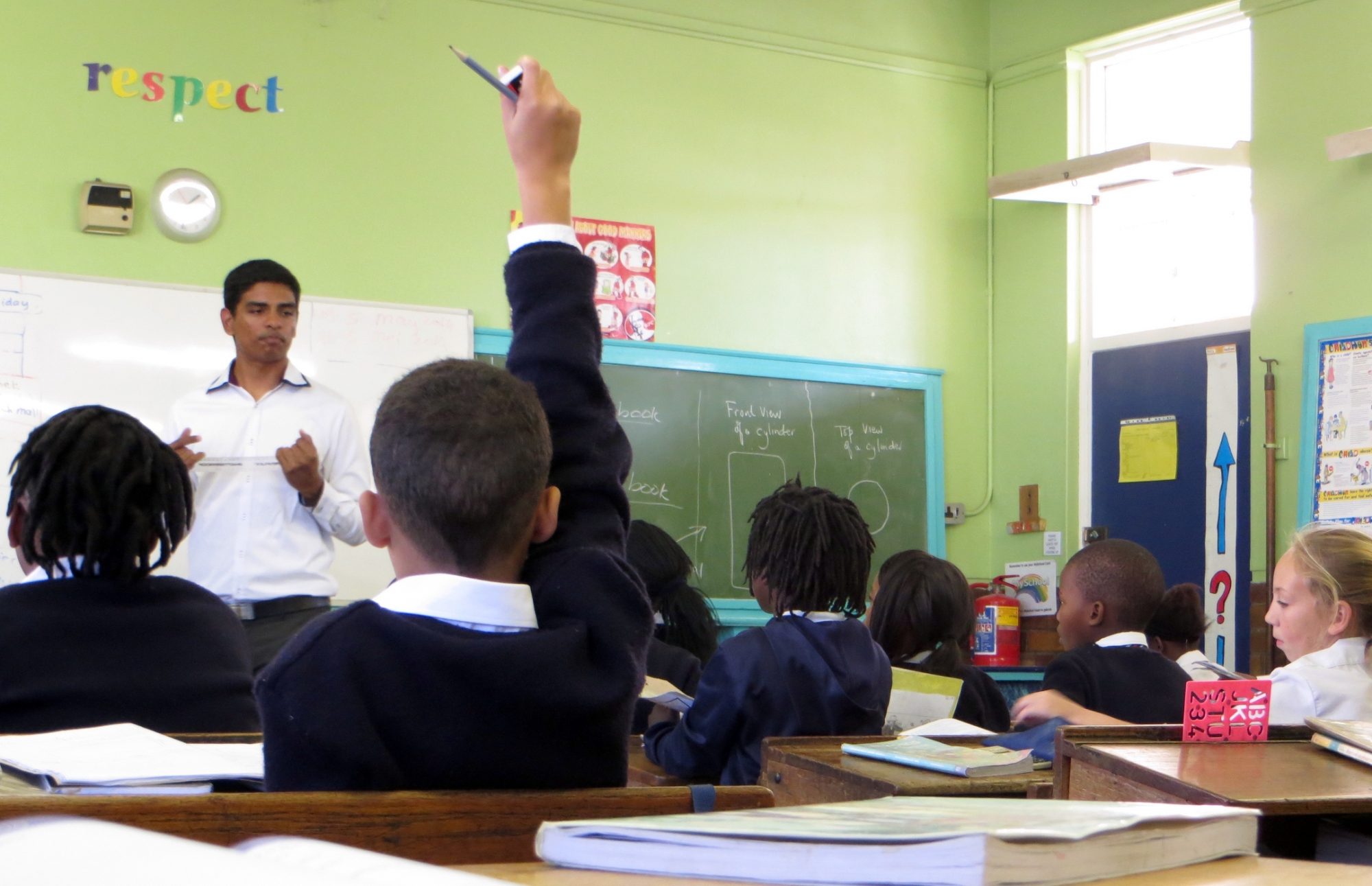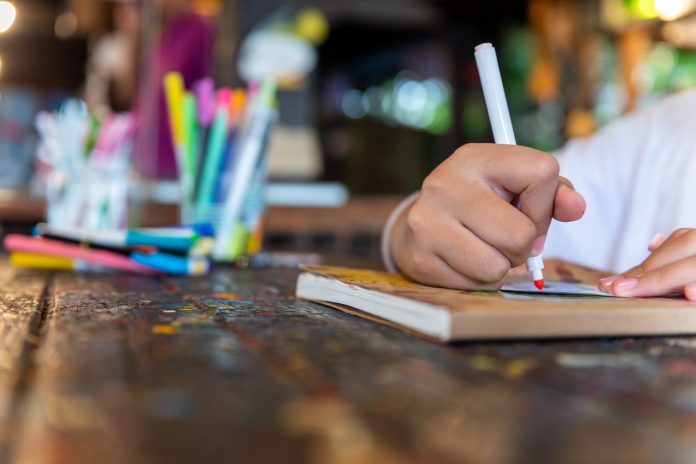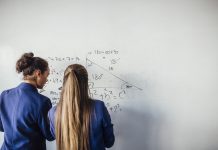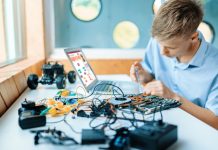Elin Eriksen Ødegaard, Director and Professor in Early Childhood Pedagogy from Western Norway University of Applied Sciences, describes a collaborative narrative as a speech genre tailored to early years pedagogy
In most Western societies, parents work while their children spend most of their awake time in early childhood settings, such as kindergartens or schools. In addition, children live apart from their grandparents for many reasons, resulting in fewer interactions between generations. Early years institutions, therefore, serve several parallel societal and personal purposes; 1) a safe place for children to be when parents and grandparents work, 2) an educational setting, preparing children for life and school, 3) a place for children to make friends and learn social skills and 4) an arena for enculturating children to societal and local values, norms and habits.
When children participate in a narrative talk in families and early years educational settings, they engage in an essential cultural mould for exploring and understanding the world in which they live. The collaborative narrative is a powerful cultural artefact since such practice brings up themes and subjects for explorative and elaborate talk, a conversation genre that opens for richer bonds between people and opportunities for a deeper understanding of complexity, history and anticipations, and dreams of the future. When families and teachers engage with children in a collaborative narrative, they also support children in using language and creating meaning. Furthermore, research shows that studying narrative as a collaborative making gives new insights into children’s, families, and teachers’ perspectives, respectively, and how these stories may or may not be coordinated (Polkinghorne, 1988; Ødegaard, 2007a).
Research and educational philosophy and psychology have documented relationships between the youngest and adults in later generations (Hedegaard & Eriksen Ødegaard, 2020). Collaborative engagement and interaction between adults, e.g., teachers, parents and grandparents, and children, have long been identified as beneficial to children’s growth and development. In intergenerational dialogues, young and older adults pass on cultural heritage. At the same time, children’s understandings and perspectives can come to the forefront and thus contribute to cultural sustainability. Since research on intergenerational engagement is most common from the perspective of the elderly (Oropilla, 2021), we welcome research that opens up for children as participants, engaging in collaborative narrative practices (Oropilla & Ødegaard, 2021; Ødegaard, 2020).
Collaborative narrative as a speech genre tailored to early years pedagogy
Learning language and becoming part of a local community and culture are ongoing processes in children’s lives. When young children, from birth, are invited into verbal co-construction, or when their verbal initiatives and gestures are interpreted and extended by a more competent person, the participants’ understandings stretch beyond what is going on in the present moment. The formative development process starts at birth (Gradovski et al., 2020). Narratives are crucial to humans in their efforts to make meaning and build self-understanding and form their development.
The genre of collaborative narrative may be defined in increasingly detailed ways. Still, the basic constituents of this genre as a cultural artefact is an account of an event related by time and human (or human-like) actions. This means a collaborative narrative requires participants to take turns to establish actor(s) and actions taking place. This description takes time and turns and will be organised temporally (Ødegaard & Pramling, 2013). It is vital to a narrative of how the events weave together. When very young children are involved in the collaboration, the adult must consider utterances and gestures. Such a speech genre entails ‘spontaneous concepts’, what can be called ‘narrative’ modes of discourse or reasoning (Bruner, 1987), often found in everyday ways of speaking and reasoning. When collaborating with children in meaning-making, one also needs to understand play modes as part of the conversation (Ødegaard, 2007).
High awareness of what is worth talking about from children versus teachers’ or older adults’ points of view and how meaning-making is negotiated can make formative processes more transparent. Narratives are often intertextually linked to linguistic, artistic, and material resources made available in the participants’ culture. This was an obvious result of a series of studies of children’s and teachers’ collaborative meaning-making (Ødegaard, 2006, 2007b, 2011).

Intergenerational engagements are crucial to strengthening belonging to a community & culture
Studying intergenerational programmes and practices (Oropilla 2021) as well as intergenerational teacher-child talk (Ødegaard, 2007), we also draw on intergenerational learning as Learning by Observing and Pitching In (LOPI) (Rogoff, 2003). Central to LOPI, is that the child (articulated as the learner) is incorporated and contributes to the family and community endeavours. Communication will be both non-verbal and verbal, and the narrative activities will be adaptable and collaborative. When an infant, and later, a toddler and an older child enter into the collaborative narrative genre, their voices are listened to and attuned.
The adult switches between cultural transmission and listening to the stories children tell (Ødegaard, 2006). As such, the child agency will eventually have the potential to change families and kindergartens. Enculturation are not only monological, going from the older adult to the younger generation. Eventually, the older adult can learn from the child’s initiative when engaging in a collaborative narrative. Narratives about and with children are spun into becoming a reality in the sense that narratives told become a memory. Memory does not belong to the individual person alone but is shared when the story is made collaborative. Stories told in collaboration will also form the expectations and worldview of the future. Sensitivity and possibilities for reciprocity and emotional and physiological care lay the foundations for health, psychosocial and cultural attachment, as well as for cognitive and bodily understanding, values and habits. These foundations are central to robust living in times of crisis.
References
1. Bruner, J. (1987). Life as Narrative. Social Research, 54(1), 11-32.
2. Gradovski, M., Ødegaard, E. E., Rutanen, N., Sumsion, J., Mika, C., & White, E. J. (2020). The First 1000 Days of Early Childhood: Becoming (Vol. 2). Singapore: Springer Singapore Pte. Limited.
3. Hedegaard, M., & Eriksen Ødegaard, E. (2020). Children’s Exploration and Cultural Formation (1st ed. 2020. ed., Vol. 29). Springer International Publishing: Imprint: Springer.
4. Oropilla, C. T. (2021). Spaces for Transitions in Intergenerational Childhood Experiences. In E. E. Ødegaard & J. S. Borgen (Eds.), Childhood Cultures in Transformation. Brill. https://doi.org/https://doi.org/10.1163/9789004445666_005
5. Oropilla, C. T., & Ødegaard, E. E. (2021). Strengthening the Call for Intentional Intergenerational Programmes towards Sustainable Futures for Children and Families. Sustainability (Basel, Switzerland), 13(10), 5564. https://doi.org/10.3390/su13105564
6. Polkinghorne, D. E. (1988). Narrative knowing and the human sciences. State University of New York Press.
Rogoff, B. (2003). The Cultural Nature of Human Development (1. ed. ed.). Oxford University Press.
7. Ødegaard, E. E. (2006). What’s worth talking about? Meaning-making in toddler-initiated co-narratives in preschool
8. Early Years -An International Journal of Research and Development, 26(1), 79-92.
9. Ødegaard, E. E. (2007a). Meningsskaping i barnehagen : innhold og bruk av barns og voksnes samtalefortellinger. Göteborgs universitet.
10. Ødegaard, E. E. (2007b).
11. What’s on the teachers agenda? International Journal of Early Childhood, 39(2), 45-65.
12. Ødegaard, E. E. (2011). Narrative practice as a site for studying conditions for children’s cultural formation. NarrNet, http://www.narratology.net/sites/www.narratology.net/files/proceedings.pdf, 228-242.
13. Ødegaard, E. E. (2020). Dialogical Engagement and the Co-Creation of Cultures of Exploration. In Children’s Exploration and Cultural Formation (pp. 83-104). Springer Nature.
14. Ødegaard, E. E., & Pramling, N. (2013). Collaborative Narrative as Linguistic Artifact and Cultural Tool for Meaning-making and Learning.

This work is licensed under Creative Commons Attribution-NonCommercial-NoDerivatives 4.0 International.











